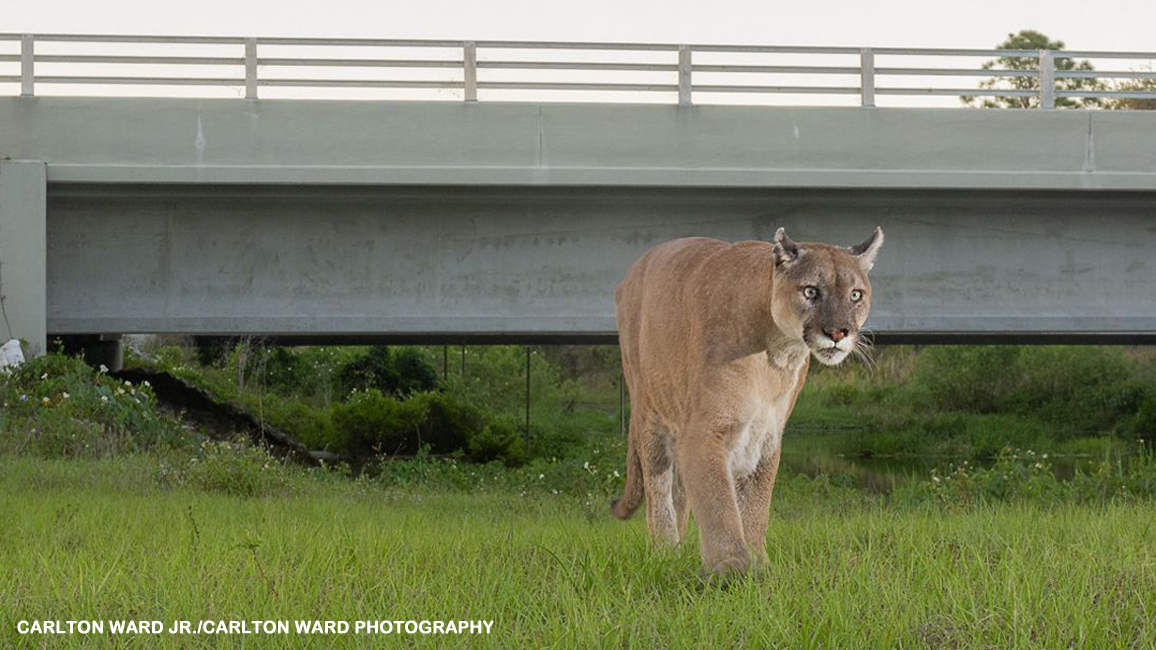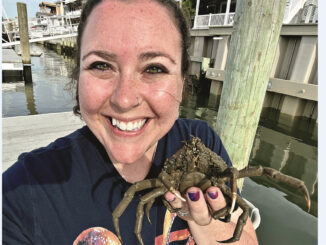
A Path for Panthers
By Hannah Schardt; photos by Carlton Ward Jr./Carlton Ward PhotographyAs more and more people move to Florida, the state’s most famous cat is getting squeezed out. How can it get the room it needs to roam?

With its sandy beaches and year-round warm weather, Florida is a popular place to live. In fact, nearly a thousand people move there each day!
All those people need places to live, work, and shop. So every year in Florida, 100,000 acres of wild land are turned into roads, houses, or businesses. And wide highways split the wild land that’s left.
Those are big problems for the state’s biggest cat: the Florida panther. This wild cat needs a lot of wild land to hunt, find a mate, and raise babies. And crossing busy roads is dangerous. So what’s a cat on the move—and the people who love it—to do?

VIDEO: WATCH FLORIDA PANTHERS IN ACTION!
WHAT CAT IS THAT?
If you know what a cougar is, you know what a panther is, too. Cougar, puma, mountain lion, and panther are all different names for the same animal. In Florida, the cat is called a panther.
Panthers are built for hunting. They have sharp eyes that spot even the smallest movements. And strong, super-long back legs give them the power they need to leap and climb. A panther can easily climb over a 12-foot fence or jump as far as the length of a school bus!
PANTHER PROBLEMS
Panthers, or cougars, once prowled all over North and South America. But people were afraid the cats would harm them or their livestock, so they often killed them. And as forests were cut down to make way for houses and farms, the big cats were left with fewer places to live. In the United States, they are now found only west of the Mississippi River—and in Florida.
Not long ago, it looked as though Florida’s panther population might disappear, too. By the 1970s, only 20 panthers were left in the whole state. But people decided that the panther is a cat worth saving. They set aside protected land where it could live in peace. In 1982, Florida named the panther its official state animal.
Today, as many as 200 panthers roam parts of south and central Florida. But that’s not enough cats—or enough wild space—to make sure the population survives.
Panthers don’t like to live too close to each other. A single male panther may claim 200 square miles as his own! When a road runs through a panther’s territory, the cat may try to cross it and be killed by a car. So conservationists realized that protecting separate pieces of wild land won’t save the panthers. The pieces of land need to be connected.

MAKING CONNECTIONS
A group of Florida scientists and conservationists had an idea: Why not link up the wild places that make good habitat for panthers and other wildlife? That idea became a huge project called the Florida Wildlife Corridor—a kind of wilderness path that would give animals a safe way to travel throughout the state.
The conservationists work with government leaders and private landowners to set aside more protected land. They also put up fences along busy roads to keep panthers and other wild animals from sprinting across. And they build special underpasses that allow wildlife to move safely beneath highways. Of course, houses and roads are still being built every day in Florida. But with some careful planning and hard work, people can give panthers a safe path to the future.
WE NEED A PATH, TOO!
Panthers aren’t the only ones that could use a protected path. Meet a few of the wild animals that share Florida’s forests with panthers. From top to bottom, a white-tailed deer and her fawn, a couple of wild turkeys, a black bear, and a bobcat all pose for their portraits.
All the photos on this page—and many on the last five—were taken with a camera trap. That’s a camera that detects movement and automatically takes a photo of whatever is passing by. Using a camera trap is a great way to photograph animals that are rare or shy—especially panthers!
















